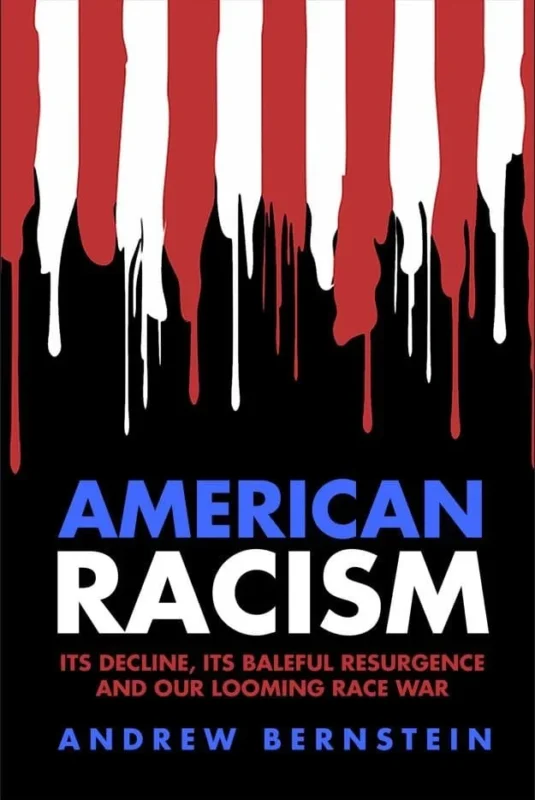Now in his 12th year, Will Danoff is running Fidelity Contrafund, and, as usual, he is running it brilliantly. In 1996, I conducted one of those exercises to which idle minds are often prone, attempting to find the best core mutual fund – that is, a fund that could be an investor’s sole long-term stock holding, the investment you make when you start working and keep until you retire.
I knew it was a quixotic pursuit – “best” depends on your own needs, tastes and portfolio. But I pressed on, requiring that the “contestants” be diversified U.S. stock mutual funds open to the public, with a high return over the preceding 10 years, below-average risk, the same manager for at least five years, and good long-term prospects. The winner was Contrafund, which, by chance, turned out to be a fund that had been my own core holding since 1992, two years after Danoff, a Fidelity veteran, took over.
It hasn’t disappointed. For the first eight months of this horrifying year, Contrafund (whose symbol is FCNTX) was down 7 percent. That’s 13 percentage points better than the benchmark Standard & Poor’s 500-stock index. Meanwhile, the average U.S. stock fund suffered a loss of 19 percent, and Contrafund’s in-house rival, Fidelity Magellan (FMAGX), the world’s largest mutual fund managed by a human, was off 20 percent.
But Contrafund’s strength is not the hot year or two; it’s the long run. Over the past five years, Contra (if I may be familiar) has returned an annual average of 5.6 percent, compared with just 1.7 percent for the S&P; over the past 10 years, the fund has returned an average of 13.1 percent, vs. 10.4 percent for the S&P. Contra ranks in the top 3 percent of diversified growth funds so far in 2002 and in the top 4 percent over the past 10 years.
There are no guarantees that Contra will prolong its success, of course, but $10,000 invested today at a 13.1 percent return will become more than $1.3 million in 40 years.
I ranked Contra first in 1996, and I would still rank it first today out of the 1,995 institutions that Lipper Analytical Services Inc. classifies as “growth funds.” In addition, in this column I list four excellent runners-up among managed funds.
Bear in mind that my selection of Contrafund and the others is a matter of personal proclivity. For example, it’s perfectly acceptable to choose index funds such as Vanguard 500 Index (VFINX) or Vanguard Total Stock Market Index (VTSMX) or electronically traded funds like Spiders (SPY), which attempt to mimic the broad market averages. But I have a preference for humans over computers when it comes to picking stocks.
Contra began life in 1967 as a truly contrarian fund, consciously staying away from the favorites. It has, for example, owned many more small-caps and mid-caps than the average core fund, and it often has leaned toward ignored and unwanted value stocks. Danoff maintains a distinct style – he wasn’t religiously opposed to tech stocks, but he dumped many of them quickly a few years ago when it became clear they were overvalued. He doesn’t ride the momentum of the moment; he stakes out positions, and the facts verify his choices. It is a strategy that works. Contrafund had $1 billion in assets in 1991 and $29 billion at last count.
What’s most impressive about Contrafund is its consistency and low volatility. The fund has beaten its peers in nine of the 12 Danoff years and beaten the Wilshire 5000 index, which includes every listed U.S. stock, in 10 of 12. Danoff’s worst annual loss was 13 percent in 2001, but the fund has returned more than 20 percent in seven calendar years since 1991. Measured by three separate standards, its riskiness is about one-third lower than that of the market as a whole. In other words, the fund provides a relatively smooth ride for its investors.
How does Danoff do it? To start, he is an exceptional stock picker, backed by a fine research staff. He uses a successful upgrading strategy that offers a lesson that small investors should consider adopting for their own portfolios of individual stocks.
“As the market has declined over the past two years, I’ve made a considerable effort to upgrade the quality of the fund’s investments,” he explains. “In every industry, I’ve tried to identify the sector leader – or leaders – that I feel have the strongest position, highest returns and fastest growth rates. This ‘best of breed’ strategy has helped the fund’s performance.”
Absolutely. When the market is roaring, the best companies in a sector can be very expensive, and choosing a well-priced second- or third-best may be a sensible strategy. But when prices fall, terrific top-tier firms can be bought inexpensively, and it is wise to trade up. Yes, even as a buy-and-hold fanatic, I advocate selling medium-grade stocks to buy leaders.
Danoff’s preference is to own the leader in an industry and forget the rest. An example he cites is Lockheed Martin Corp. (LMT), not merely the fund’s largest holding over the past year, but also its best performer.
“By making such a big commitment to Lockheed – and largely staying away from most other defense stocks – the fund benefited handsomely and avoided the disappointing results of some of Lockheed’s weaker competitors,” Danoff said. While Danoff owns nearly 400 stocks, his latest report shows no Boeing Co. (BA) and only a tiny bit of Northrop Grumman Corp. (NOC) and Alliant Techsystems Inc. (ATK).
Among the other companies Danoff considers leaders are PepsiCo Inc. (PEP), Colgate-Palmolive Co. (CL), Johnson & Johnson Inc. (JNJ) and 3M Co. (MMM). His fourth-largest holding is Berkshire Hathaway Inc. (BRKa), the holding company chaired by America’s best investor, Warren Buffett. Berkshire itself owns lots of industry leaders, including Geico Corp., the low-cost property and casualty insurer; candy chain See’s Candies Inc.; and Executive Jet, which leases airplanes.
Danoff keeps risks low through heavy diversification. Lockheed, the top holding, represented just 3.3 percent of assets at the end of June (the latest report). In fact, the 10 holdings make up just 22.5 percent of the whole portfolio, so one or two big mistakes won’t weigh it down. One-sixth of his assets are in non-U.S. stocks, including British-based BP PLC (BP); he looks for leaders all over the world.
Danoff is not going to beat the market by a huge margin, but he has shown that a good manager can whip the market as a whole. My second-favorite fund is Legg Mason Value Trust (LMVTX), whose manager, William H. Miller III, has managed to beat the S&P 500 index for 12 years in a row.
One drawback of Miller’s fund is high risk, a function of heavy concentration in a small number of companies. At last report, his top three holdings – UnitedHealth Group Inc. (UNH), Waste Management Inc. (WMI) and MGIC Investment Corp. (MTG) – represented 21.2 percent of total assets. A second drawback is fairly high expenses, at 1.7 percent annually. But you can’t argue with Miller’s performance: an average annual return of 15.6 percent for the 10 years ended Aug. 31, 2002.
At 0.9 percent last year, Contra’s expense ratio is about half that of Legg Mason Value, but the Fidelity fund requires an upfront load, or commission, of 3 percent. Still, if you hold Contra for 10 years or more – as you should – the load’s effect becomes insignificant.
Danoff’s performance over the past year is all the more remarkable when you consider that he has maintained a relatively low proportion of cash. Other stock funds have notched above-average returns lately by moving away from stocks. For example, Clipper Fund (CFIMX), run by the talented James Gipson, recently reported that 28 percent of its assets were held in bonds, and Sequoia Fund (SEQUX), a highly concentrated fund (35 percent of its holdings are in Berkshire stock and another 13 percent in First Third Bancorp) that is closed to new investors, had one-sixth of its assets in cash.
By contrast, Danoff, like Miller, has stuck to his mandate. When investors buy stock mutual funds, they expect these funds to serve as part of the stock portion of their portfolios. If investors want to own bonds or cash, they should make that asset-allocation decision themselves; it’s not up to a stock-fund manager to do it.
Ranking third on my list of great core funds is Dodge & Cox Stock Fund (DODGX), with a 15.4 percent annual average return over the past 10 years ($10,000 turned into well over $40,000) and a rock-bottom expense ratio of 0.5 percent, with no load. The fund is run by a group of managers with a careful style that stresses value, or bargain-priced, companies. In 2001 the fund was up 9 percent, in 2000 it was up 16 percent, and over the past three years, it has beaten the S&P by a total of 50 percentage points. Top holdings at last report include Dow Chemical Co. (DOW), Golden West Financial Corp. (GDW), AT&T Corp. (T) and Bank One Corp. (ONE).
My fourth favorite is the Torray Fund (TORYX), based in Bethesda. “This is one of the best stock-picking vehicles out there,” Morningstar says. “Using a buy-and-hold approach, it holds comparatively few names.” Manager Bob Torray has beaten the S&P in seven of the past eight years, and since 1992 the fund has returned an annual average of 13.6 percent. Like Miller, Torray keeps 100 percent of his fund’s assets in stocks. Top holdings are Illinois Tool Works Inc. (ITW), United Technologies Corp. (UTX), Boston Scientific Corp. (BSX), J.P. Morgan Chase & Co. (JPM) and Tribune Co. (TRB), the media firm that owns the Chicago Tribune, the Los Angeles Times and a string of TV stations.
Finally, at No. 5 is Mairs & Power Growth Fund (MPGFX), another 100 percent stock fund with a highly concentrated portfolio of just 34 stocks, incredibly low turnover (just 8 percent a year) and the second-best overall return for a core fund over the past 10 years.
At a time when volatility reigns and stocks are in their worst slump in 30 years, funds like these offer some comfort in exceptionally difficult times









